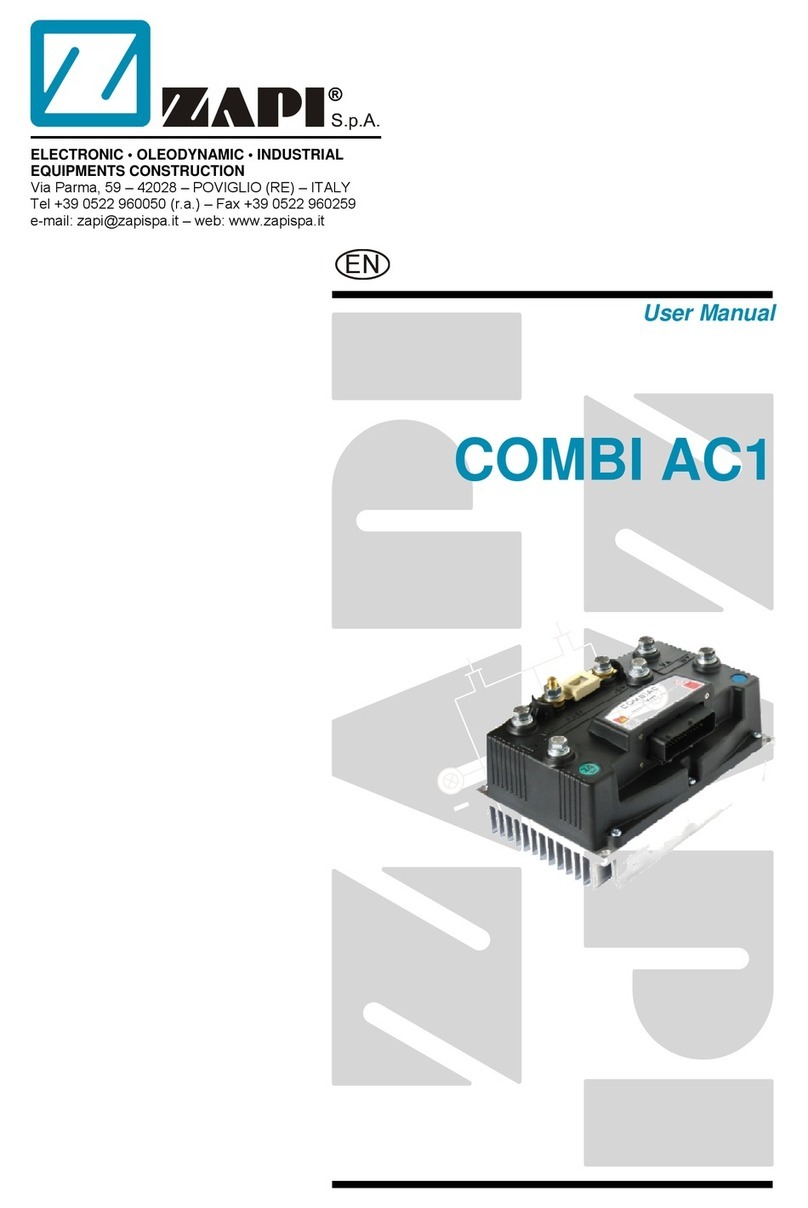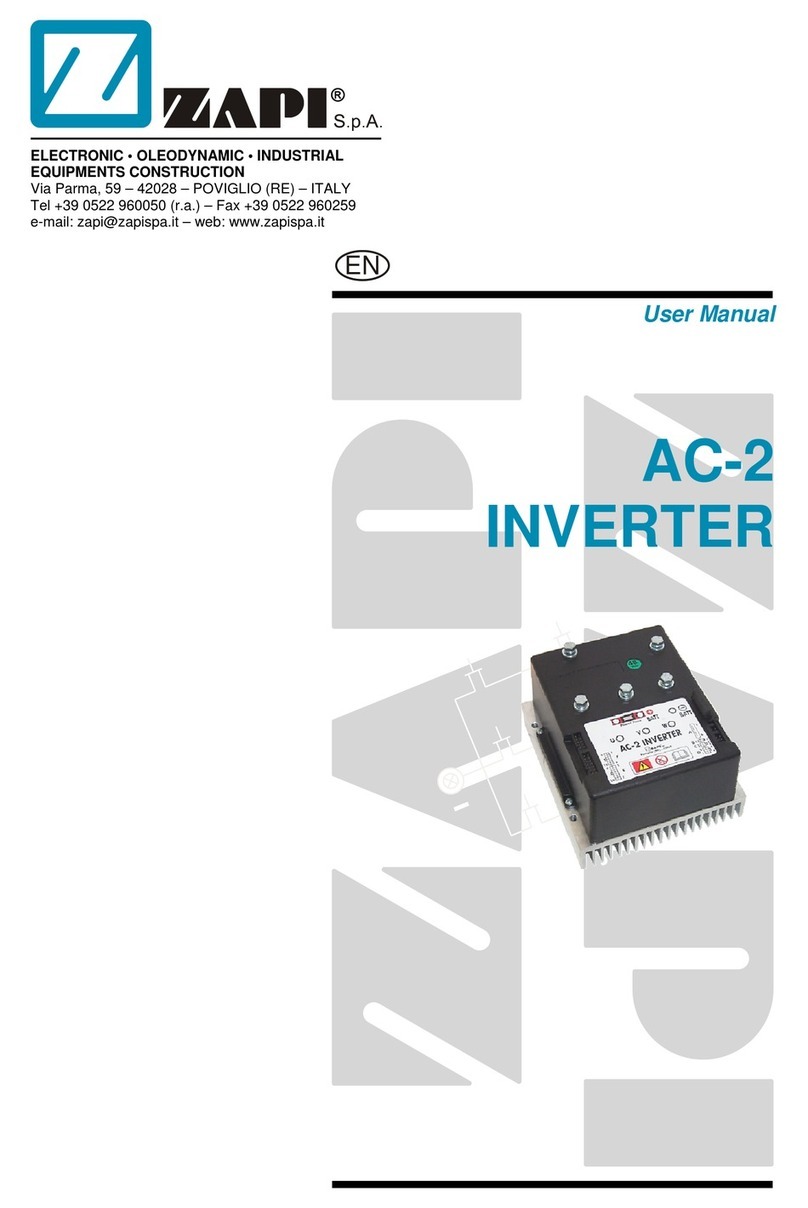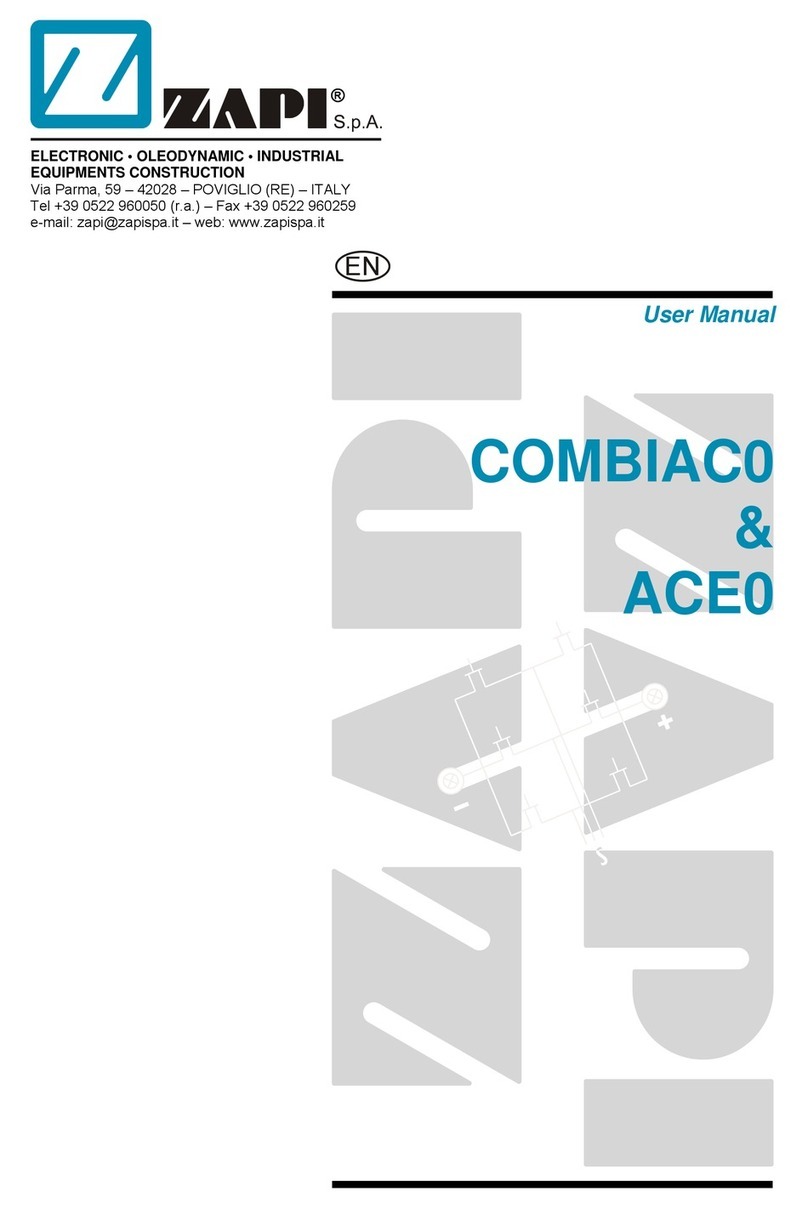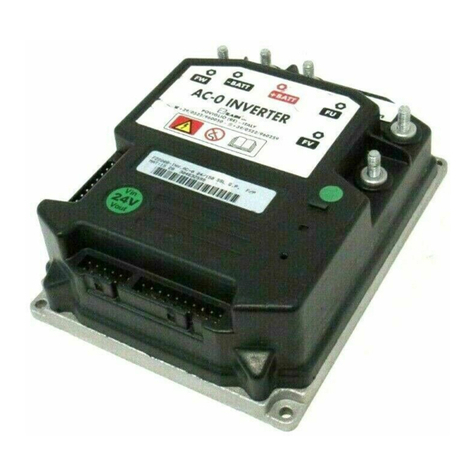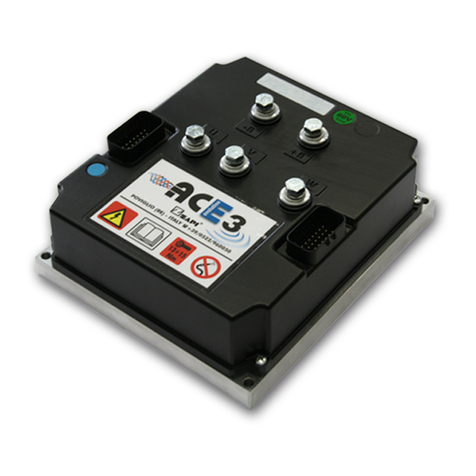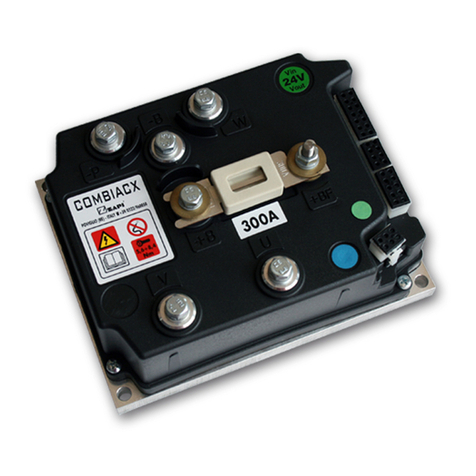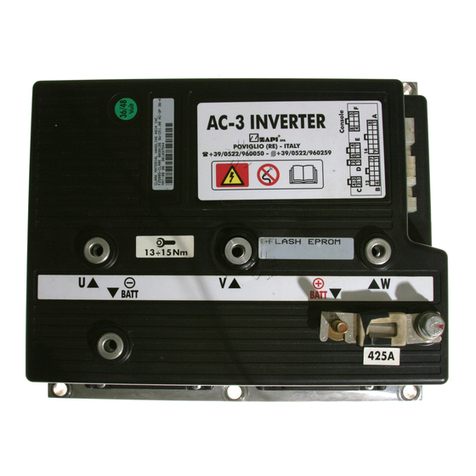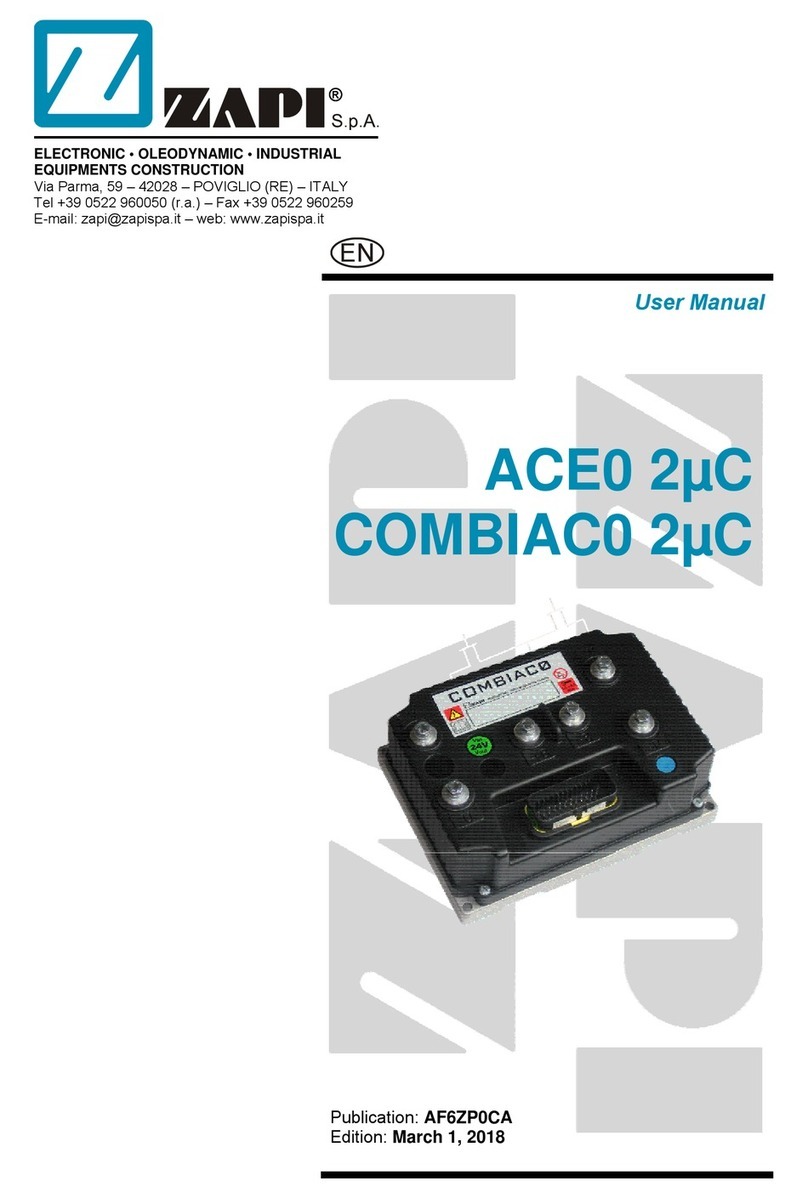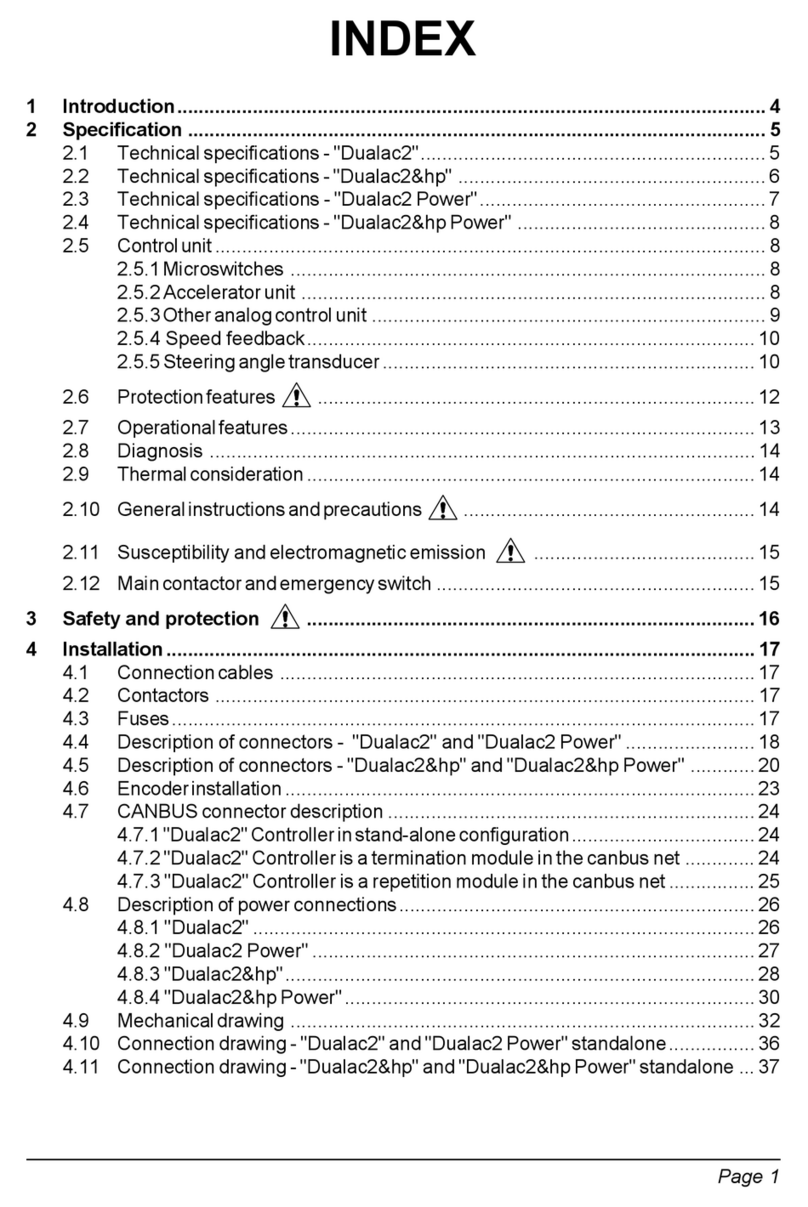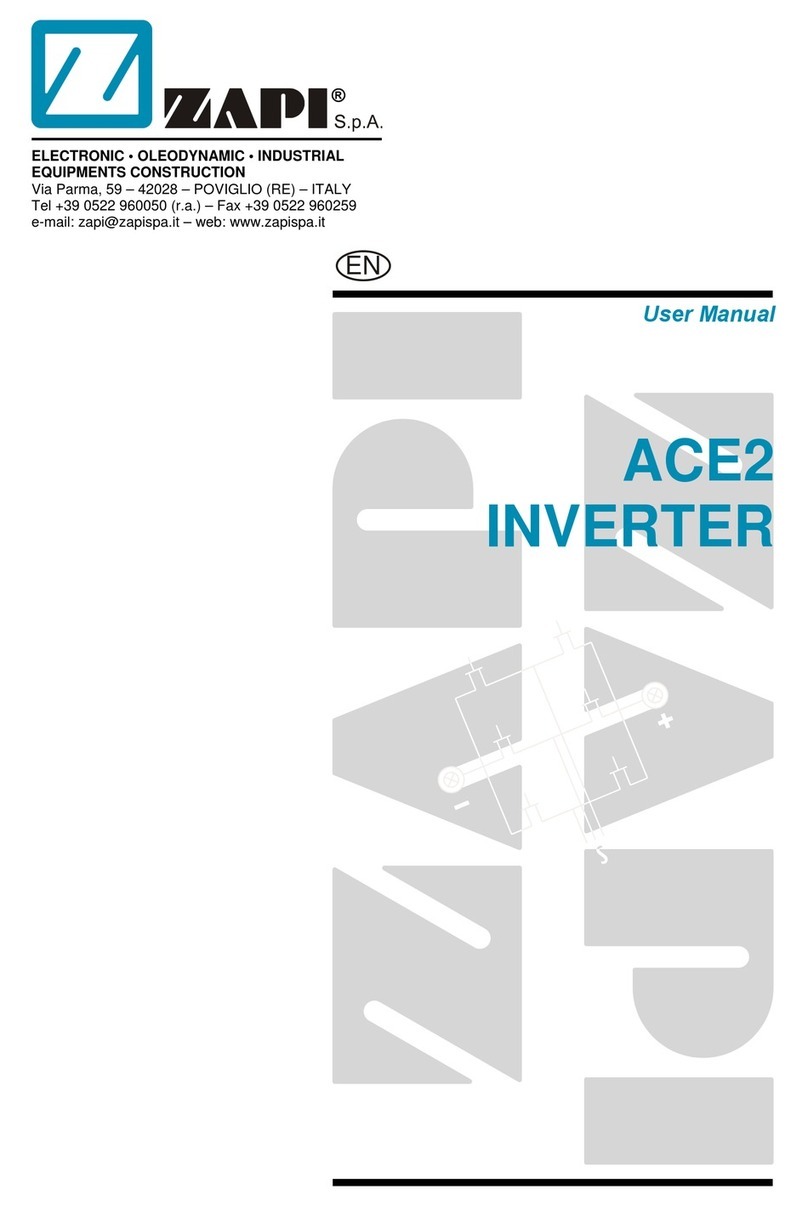
AF9ZP0BA - EPS-ACW REACH TRUCK - User Manual Page - 3/90
Contents
1INTRODUCTION ...................................................................................................................5
2FEATURES............................................................................................................................6
3MECHANICAL SPECIFICATIONS........................................................................................7
4MECHANICAL DRAWING ....................................................................................................8
5MOTOR AND GEAR BOX.....................................................................................................9
6ELECTRICAL SPECIFICATIONS.......................................................................................10
7BLOCKS DIAGRAM............................................................................................................11
7.1Speed Control Mode (Open Loop)............................................................................11
7.2Position Control Mode (Closed Loop).......................................................................12
7.3Steer Assist Mode (Torque Assisted).......................................................................12
8FUNCTIONS OF THE EPS-ACW........................................................................................13
8.1Manual Mode Steering..............................................................................................13
9SYSTEM COMPONENTS ...................................................................................................14
9.1Steering Motor..........................................................................................................14
9.2Gear Box and total reduction ratio............................................................................14
9.3EpsacW controller.....................................................................................................14
9.4Sensor in the steering wheel ....................................................................................15
9.4.1Stepper motor.............................................................................................15
9.5Feedback sensors ....................................................................................................
15
9.5.1Prox switches and Cam: mounting specification.........................................16
10CONNECTING DRAWING ..................................................................................................22
10.1Connector assignment for a configuration with 1ENC, 2SWs & 2CANs...................23
11INSTALLATION PROCEDURE...........................................................................................24
11.1One shot installation procedure for an arrangement without mechanical limitation..24
12SETTING THE EPS-ACW ...................................................................................................26
12.1Complete set-up description.....................................................................................26
12.1.1Manual mode with the Stepper Motor.........................................................26
12.2Quick set-up..............................................................................................................26
12.2.1Stepper Motor without mechanical angle limitation.....................................26
12.2.2Stepper Motor with mechanical angle limitation..........................................27
12.3Sectors vs. Cam position and switches configuration...............................................27
12.3.1Sectors when ENC SPEED is positive in CounterClockWise (CCW)
direction ......................................................................................................28
12.3.2Sectors when ENC SPEED is positive in ClockWise (CW) direction..........29
12.4AUX FUNCTION 11 manual setting..........................................................................29
12.5PULSE IN 180 DEG manual setting .........................................................................30
12.6Autoteaching.............................................................................................................31
13PROGRAMMING & ADJUSTMENTS USING DIGITAL CONSOLE...................................33
13.1Adjustments via console...........................................................................................33
13.2Description of console (hand set) & connection .......................................................33
13.3Description of standard console menu .....................................................................34
13.3.1Settings in Stepper motor with Encoder and Two Toggles Switches..........35
13.3.2Config menu “SET OPTIONS” functions list...............................................36
13.3.3Config menu “ADJUSTMENTS” functions list.............................................39
13.3.4Config menu “SET MODEL” functions list...................................................42
13.3.5Main menu “PARAMETER CHANGE” functions list ...................................44
13.3.6Zapi menu “HARDWARE SETTINGS” functions list...................................47






